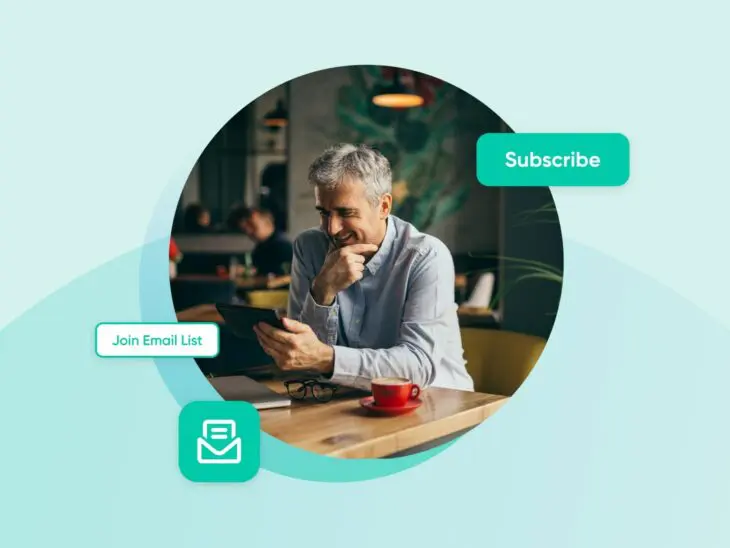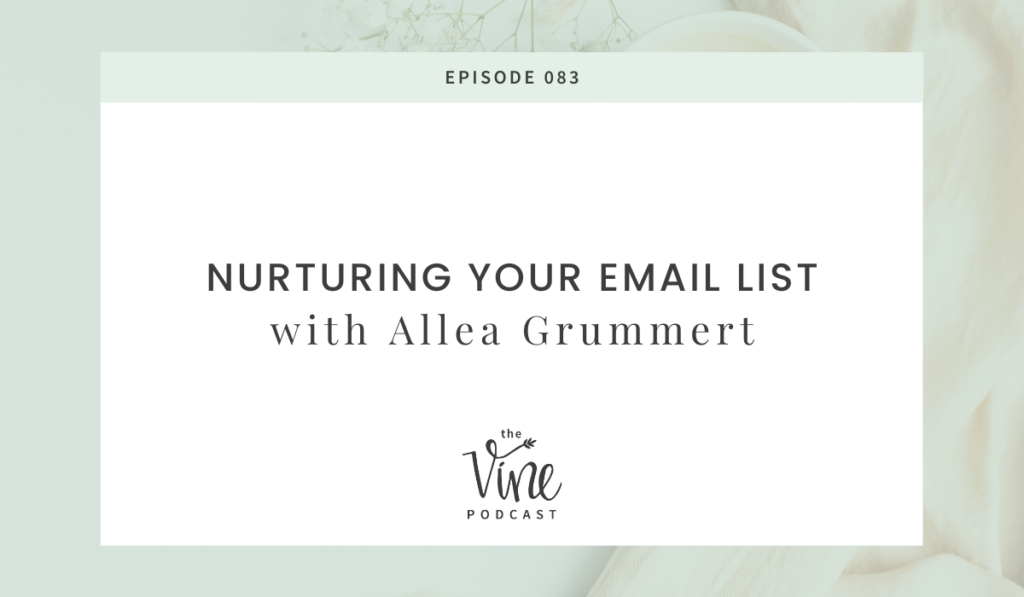Imagine the thrill of someone new subscribing to your email list. It’s not just about growing numbers; it’s about opening the door to meaningful connections.
When someone opts into your email list, it sets off a chain reaction, a dance of digital signals and automated processes designed to nurture this budding relationship. Do you know what actually happens when someone hits “subscribe”? Understanding this process can be the key to crafting effective and engaging email campaigns.
From capturing their interest to sending them that first captivating email, every step is crucial. You’ll discover how your email service provider takes over, how subscribers are organized and segmented, and what happens behind the scenes with automation systems. Dive into this article to uncover the secrets of what happens after that click, ensuring you maximize every opportunity to engage with your audience. You’ll learn how managing consent and compliance can protect your reputation and why tracking subscriber data is vital for fine-tuning your strategies. By the end, you’ll understand how these insights can empower you to create compelling campaigns that resonate deeply with your audience.

Credit: www.dreamhost.com
Introduction
Subscribing to an email list opens a new world for the subscriber. They start receiving regular updates, newsletters, and special offers directly in their inbox. Each email provides them with valuable insights, tips, or exclusive content that they might not find elsewhere.
It’s a chance for businesses to build a strong relationship with their audience. Subscribers often feel more connected and informed about the brand’s latest happenings. For the business, it’s an opportunity to share their story and engage with their community.
Over time, these emails can turn casual readers into loyal customers. The exchange of emails creates a bond, allowing subscribers to feel like part of a larger community. This relationship can lead to increased trust and loyalty, benefiting both parties.
Step 1: The Moment They Hit “subscribe”
Subscribers trigger an exciting process by pressing that subscribe button. Their email address gets stored in your system, creating a new entry. An automatic welcome message often follows, greeting them warmly. This email might include a thank you and brief details about what they can expect next.
Subscribers are added to your mailing list, allowing them to receive regular updates, offers, and news. Your system organizes them, sometimes into categories, based on their interests or sign-up method. This helps tailor future content to their preferences. Meanwhile, behind the scenes, data collection starts.
You gain insights into their behavior, which can refine your strategies. This initial step lays the groundwork for building a long-term relationship with your audience, setting the stage for future interactions.
Step 2: The Email Service Provider (esp) Takes Over
Once someone subscribes to your email list, the next step is handled by the Email Service Provider (ESP). The ESP plays a crucial role in managing your email communications. It stores the subscriber’s information securely and ensures your emails are sent out efficiently.
With the ESP, you can organize your subscribers into different groups based on their interests or behaviors. This helps in sending them more personalized emails, making your communication more effective. The ESP also tracks how your subscribers interact with the emails you send.
For instance, it shows you if they opened your email or clicked on any links. This data helps in understanding what your audience likes, allowing you to improve your future emails. Additionally, the ESP manages all this while ensuring your emails do not end up in the spam folder, keeping your messages visible to subscribers.
Step 3: Adding The Subscriber To The Right List Or Segment
Organizing your subscribers is important for effective email marketing. After someone joins your email list, placing them in the correct list or segment is crucial. This helps in sending them the right content that matches their interests. For example, if a subscriber is interested in cooking, they should receive emails about recipes and cooking tips.
This approach ensures they find value in your emails. Using segmentation, you can also track engagement and adjust your strategies. It improves communication and helps build a stronger relationship with your audience. By understanding their preferences, you can create a more personalized experience.
This step is key to maintaining a healthy and active email list.
Step 4: Triggering The First Email Or Sequence
Once someone subscribes to your email list, it’s important to send them their first email or a series of emails. This initial communication sets the tone for your relationship with the subscriber. It helps to create a welcoming and engaging experience.
A carefully crafted email can introduce your brand, provide valuable content, or offer a special welcome gift. Timing is crucial; sending the first email promptly ensures your subscriber remembers signing up and feels valued. Including relevant information and clear calls to action encourages interaction.
An automated sequence can follow, delivering content at regular intervals. Personalization and consistency in tone and style make your emails more appealing. By understanding your subscriber’s preferences, you can tailor your emails to meet their needs. This approach builds trust and helps maintain a long-term relationship.
Remember, the goal is to make your subscribers feel appreciated and informed right from the start.
Step 5: Tracking And Logging Subscriber Data
Subscriber data is essential for understanding your audience better. Each subscription provides valuable insights. Keeping track of this data helps in tailoring future content. It’s important to log details like the date of subscription and the subscriber’s interaction with your emails.
This information aids in segmenting your audience, ensuring they receive content that matches their interests. Analyzing patterns in subscriber behavior can reveal what topics engage them most. Regularly updating your subscriber database maintains its accuracy. This step also protects against outdated information, which can affect communication efforts.
Efficient tracking ensures the effectiveness of your email marketing strategy.
Step 6: How Your Automation System Prepares Next Steps
An automation system takes charge once someone subscribes to your email list. It sends a welcome email to the new subscriber. This message thanks them for joining and may offer a special deal or more information. It also confirms their subscription.
The system then places the subscriber into a specific group. This group matches the subscriber’s interests or actions. After this, the system plans future emails. These emails might share tips, updates, or special offers. Timing is important. The automation system ensures emails are sent at the right time.
This keeps the subscriber interested and engaged. Everything happens smoothly and automatically. The system works behind the scenes. This saves you time and effort, allowing you to focus on other tasks.
Step 7: Managing Consent Preferences And Compliance
Ensuring that consent preferences are managed correctly is crucial. Compliance with privacy laws is not just a legal requirement, but also builds trust with subscribers. Start by clearly explaining how their data will be used, and give them options to select their preferences.
This could mean choosing the types of emails they want to receive or how often they wish to hear from you. Regularly update your privacy policy and communicate any changes. Make it easy for subscribers to update their preferences or opt out if they wish.
Always keep records of consents given, as this can be important if questioned about your practices. By handling consent with care, you demonstrate respect for your subscribers’ choices and maintain a positive relationship.
Final Thoughts — Why Understanding This Helps You Create Better Campaigns
Understanding what happens after someone subscribes to your email list can significantly enhance your campaign strategies. Every subscriber is a potential customer, and knowing their journey can help tailor your content. Once they subscribe, they expect relevant information and engaging content.
Crafting emails that speak directly to their interests can build trust and loyalty. Personalization plays a key role in keeping subscribers engaged, as it makes them feel valued. Analyzing subscription data provides insights into what your audience wants. This information helps refine your emails, making them more effective.
Ensuring emails are easy to read and mobile-friendly is crucial too. Subscribers are more likely to open and read emails that are accessible on their devices. By focusing on these aspects, your campaigns become more successful, increasing interaction and conversion rates.
Subscribing is just the beginning of a relationship that, with the right approach, can lead to lasting connections.

Credit: www.graceandvinestudios.com
Frequently Asked Questions
Is It Illegal To Subscribe Someone To An Email List?
Subscribing someone to an email list without their consent can be illegal under anti-spam laws. Always obtain explicit permission before adding individuals to your list to avoid legal issues and ensure compliance with regulations like CAN-SPAM and GDPR.
What Does Subscribing To Emails Do?
Subscribing to emails keeps you updated on news, offers, and promotions. It helps you stay connected with brands and receive personalized content. Manage subscriptions to avoid inbox clutter.
Should You Delete Inactive Email Subscribers?
Yes, deleting inactive email subscribers can improve open rates and deliverability. It helps maintain a healthy email list. Regularly clean your list to engage active subscribers and enhance campaign performance. Focus on quality over quantity for better results.
Do You Get A Notification When Someone Subscribes To Your Channel?
Yes, you receive a notification when someone subscribes to your YouTube channel. Check the “Notifications” tab for updates. Ensure your settings allow subscriber alerts to stay informed about new followers. Engage with subscribers to boost interaction and growth.
Conclusion
Subscribing to your email list initiates a crucial journey. Each step shapes their experience. From clicking “subscribe” to receiving their first email, it’s all orchestrated. The Email Service Provider ensures smooth transitions. Proper segmenting personalizes their interaction. Automation prepares the next steps, keeping them engaged.
Tracking subscriber data refines your strategies. Consent management ensures compliance and trust. Understanding this process boosts your email marketing efforts. It helps create effective, engaging campaigns. Happy subscribers are loyal subscribers. So, nurture them wisely and watch your list thrive.
Keep improving, and success will follow.


